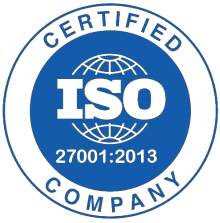Learn how to integrate Elementor Form with Zoho CRM to create custom module records using Pabbly Connect. Step-by-step tutorial with detailed instructions. This comprehensive guide reveals exactly how to connect your applications and automate repetitive tasks — accessible for professionals of all technical backgrounds.
Watch Step By Step Video Tutorial Below
1. Accessing Pabbly Connect for Integration
To create a Zoho CRM custom module record on Elementor form submission, the first step involves accessing Pabbly Connect. This integration platform allows you to connect different applications seamlessly, specifically Elementor and Zoho CRM in this case.
Begin by opening a new tab in your browser and navigating to the Pabbly website. If you already have an account, simply sign in. If not, you can sign up for free, which takes only a couple of minutes. Once logged in, click on the ‘Access Now’ button under Pabbly Connect to enter the dashboard.
2. Creating a Workflow in Pabbly Connect
After accessing Pabbly Connect, you will need to create a new workflow. Click on the ‘Create Workflow’ button, which will prompt you to name your workflow. Name it something like ‘Create Zoho CRM Custom Module Record on Elementor Form Submission’ for clarity.
- Click on the folder icon to select a folder for saving your workflow.
- Once named and saved, you will see the trigger and action boxes on the dashboard.
In the trigger section, select ‘Elementor’ as your trigger application. Then, choose ‘New Form Submission’ as the trigger event. This setup indicates that every time a new form is submitted via Elementor, it will initiate the workflow.
3. Connecting Elementor to Pabbly Connect
Next, you need to connect Elementor to Pabbly Connect. To do this, copy the webhook URL provided in the trigger setup. Then, go to your Elementor form settings and find the ‘Actions After Submit’ option.
- Click on the plus icon to add a new action and select ‘Webhook’.
- Paste the copied webhook URL into the designated field and click on ‘Update’.
After updating, return to Pabbly Connect. It will show that it is waiting for a webhook response. This means the connection between Elementor and Pabbly Connect is established and ready to receive data.
4. Setting Up Zoho CRM Integration in Pabbly Connect
Now that Elementor is connected, the next step is to set up the action application, which is Zoho CRM. In Pabbly Connect, select Zoho CRM as your action application and choose ‘Insert/Update Record’ as the action event.
You will need to connect your Zoho CRM account to Pabbly Connect. Click on ‘Connect’ and then ‘Add New Connection’. Enter your Zoho domain, which can be found in your Zoho CRM URL. After entering your domain, click on ‘Save’ and accept the permissions required to connect your account.
5. Mapping Fields and Finalizing the Integration
In this step, you will map the fields from your Elementor form to the Zoho CRM custom module. Select your custom module created in Zoho CRM, which contains fields like first name, last name, and email. using Pabbly Connect
For mapping, you will use the data received from the Elementor form submission. Click on the mapping option for each field and select the corresponding data from the Elementor response. Once all necessary fields are mapped, click on ‘Save and Send Test Request’ to verify that the integration works correctly.
If successful, you will see a positive response indicating that a new record has been created in your Zoho CRM custom module. You can then check your Zoho CRM account to confirm that the record appears as expected.
Conclusion
In this tutorial, we demonstrated how to create a Zoho CRM custom module record on Elementor form submission using Pabbly Connect. By following the steps outlined, you can automate your workflow and efficiently manage your data submissions.
Ensure you check out Pabbly Connect to create business automation workflows and reduce manual tasks. Pabbly Connect currently offer integration with 2,000+ applications.
- Check out Pabbly Connect – Automate your business workflows effortlessly!
- Sign Up Free – Start your journey with ease!
- 10,000+ Video Tutorials – Learn step by step!
- Join Pabbly Facebook Group – Connect with 21,000+ like minded people!






